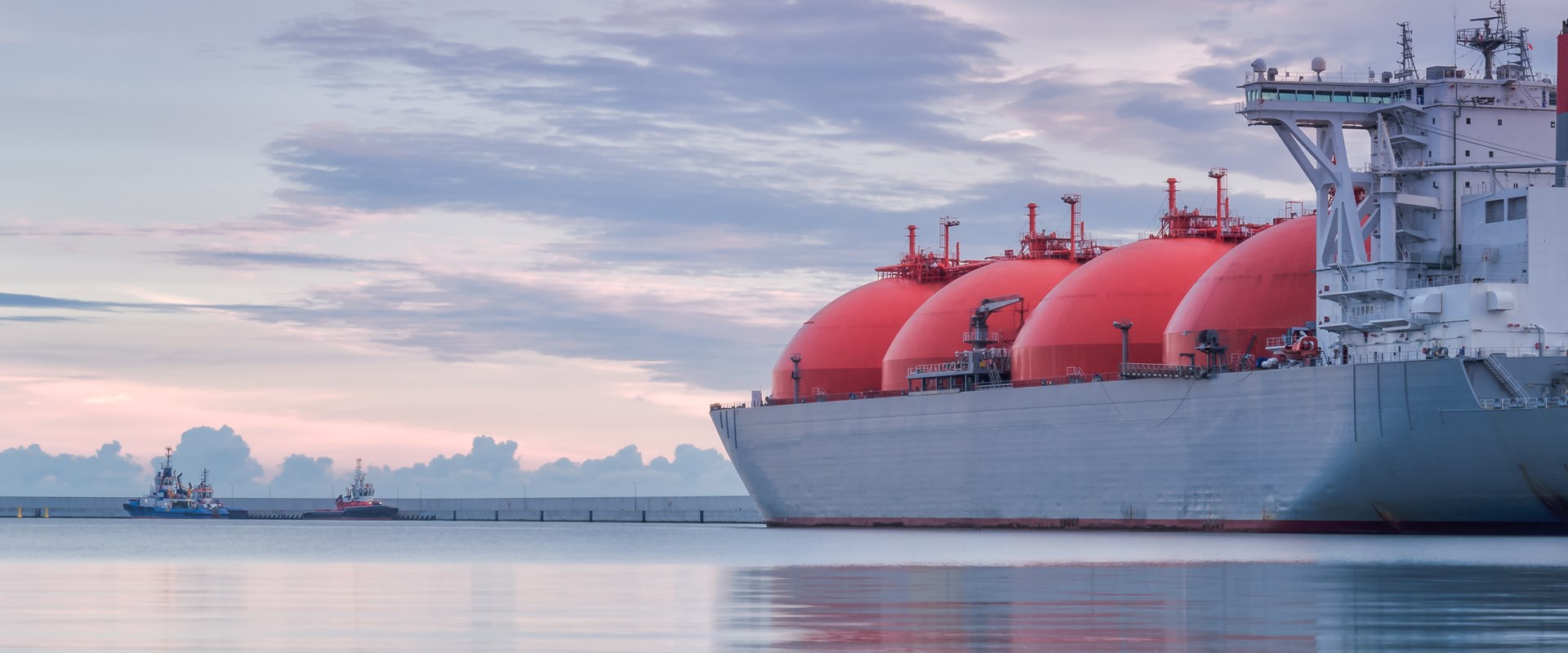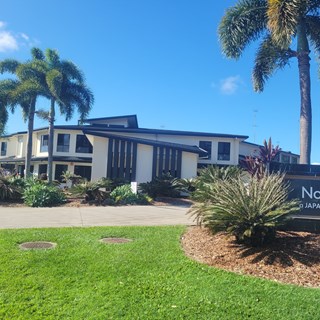
Operational considerations of FLNG
Louise Ledgard explains the importance of understanding the complexities surrounding the metocean conditions to help determine the feasibility of a potential FLNG site.
Floating LNG (FLNG) facilities have been considered as the key development of the offshore oil and gas sector for many years. With four major developments recently passing the final investment decision including Shell’s Prelude and Pacific Rubiales, many would argue that FLNG is firmly on the map and will continue to push the boundaries of scale and complexity. However, it’s important to note that there is still much caution within the financial markets given the availability and stringent specifications which can drive the project price up.
One of the main concerns is related to the impact of metocean conditions and weather downtime on the offloading operation for transfer of the product to markets. In particular, motion of the FLNG in response to long-period swells can cause ‘sloshing’ of the liquid gas in the tank and companies must duly consider the impact of sea-state to ensure safe operating limits are met within the design codes.
Louise Ledgard, Future Business Director at BMT, explains the importance of understanding the complexities surrounding the metocean conditions to help determine the feasibility of a potential FLNG site. Louise also provides a technical analysis of the offloading operations and the pros and cons associated with side by side and tandem offloads. The simulation of operations using computational models can provide valuable insight into the feasibility and economic viability for FLNG for a specific site location.
Metocean conditions play an important role in the decision making process for any LNG development. Both the design and the operability of an FLNG unit depend critically on the sea state conditions which may vary considerably depending on the site chosen.
With the number of FLNG facilities forecast to increase to meet the demand for transportation of gas reserves stranded in remote offshore locations, it is essential that the complexity of the impact of the metocean conditions at the proposed site location are fully understood. Factors such as cross seas and the alignment of the wind and waves with any current will have a significant impact on both design and operational strategy. Often the stranded gas reserves are identified in areas where there is a relatively low level of metocean information. Commissioning studies to identify metocean criteria for not only the design but the operability of the FLNG facility ensures that the economics of gas delivery to market are met.
Because FLNG facilities are floating, their motion in response to the environment adds a layer of complexity to the design problem, requiring limits on movements and accelerations to be defined and designed for. This means that an adequate description of the environment and its effect on the FLNG facility is needed. Using floating facilities rather than fixed platforms adds an extra dimension to the design problem because excessive motion can compromise the safety of the gas processing plant. Strict criteria therefore have to be established and applied for the allowable motions of the FLNG. A stable hull with small dynamic response is a pre-requisite and accounting for the second order wave loads on the hull is recognised practice during the design phase of any FLNG facilities.
The orientation of the FLNG and alignment of the unit with the wave, winds and the current is vital to its design and operation. The FLNG is relatively stable when subject to head waves but both second order forces and first order responses are much larger for beam or quartering waves. This means that the FLNG runs into significantly more problems when there are cross seas (because it can’t head in two directions at once) or when there is a misalignment of the waves with the wind and the current. To successfully quantify the response of the FLNG and to design solutions, it is therefore necessary to have a sufficiently refined description of the metocean conditions that at least allows a proper “heading analysis” to be carried out. Heading analysis is the representation of the wind, wave and current conditions with respect to the heading of the FLNG (as required for response computations). If this is done properly, then quartering or beam swell components can be identified. The consequence is that assessment of a location doesn’t only depend on parameters such as the significant wave height, but also on more complex aspects such as the occurrence of cross seas. For example, locations in the Atlantic with cross seas and variable long period swell present a different challenge than locations on the west coast of Africa where long period swell is more or less continuous and always comes from the same direction.
Sufficiently detailed information on the wave climate at any proposed site location is therefore vital for any development and a full analysis of the wave incidence in relation to the orientation and selected design concept for the vessel should be considered. The full complexity of sea states needs to be fully understood in order to address such design considerations as; mooring design, whether a breakwater is required for sheltering, the heading orientation of the FLNG unit and whether disconnectable turret or thruster positioning configuration are defined for the design.
To date the procedures for offloading of LNG from an FLNG facility have been constrained, partly due to LNG cryogenics. The standard procedure is to use loading arms to transfer LNG to carriers either moored at a jetty or using ship to ship transfer.. The difficulty of transferring cryogenic fluids between ships means that side by side offloading is achievable but that the more conventional solution for oil, tandem offloading, presents significant challenges. This leads to restrictive operational limits both because it is more difficult for carriers to safely arrive at and depart from a side by side configuration and because loading arm restrictions limit the sea-states for side by side transfer. The limiting significant wave height for side by side transfer is approximately 2.5m compared with about 5m significant wave height for tandem offloading. The impact of coupled vessel interactions and the relative motion of vessels during side by side transfer of the LNG should be reduced in order to maximise the uptime of the transfer of the LNG to the transportation vessels. Understanding the prevailing metocean conditions at the selected site location can significantly enhance the operational process and the efficiency of the offloading of the LNG onto the approaching tankers. In such a competitive industry, any reduction in time constraints during the offloading operation procedure provides an advantage.
Sloshing of the LNG during the transfer operation is also a recognised risk and requires extensive modelling to ensure that the facility is operating under the design safety constraints. Positioning the FLNG unit in an orientation to reduce the amount of sloshing, which is inherently sensitive to the wave excitation frequencies of the FLNG unit is critical for optimisation. Operational metocean studies and real-time data from the FLNG vessel can assist with aligning the FLNG towards or away from the incident waves to reduce the dynamic response of the vessel (pitch and roll) and the consequential impact of sloshing.
In some locations, there are arguments for and against siting an LNG facility onshore or offshore. Safety and operational constraints should be considered in combination with the site specific metocean conditions.
Relevant questions for consideration during the site selection are;
A detailed metocean study early on in the feasibility assessment is a pre-requisite to be able to answer these questions / for making these considerations and should be part of the best practice for site selection and conceptual design. It is vitally important in any feasibility assessment to fully understand both extreme and operational metocean conditions to ensure not only the design, but the operation of the FLNG unit is optimised for the proposed site location. The wind loads acting on the topsides of FLNG facilities and LNG carriers can also play an important role during installation and operational conditions and, in regions affected by extreme wind events such as tropical revolving storms, it represents a highly influential factor in the design. Mean aerodynamic wind load coefficients, especially for critical scenarios such as the offloading configuration, are routinely investigate in BMT’s large boundary layer wind tunnel facility.
Over the last decade, there has been significant improvement in numerical modelling techniques to generate global wind and wave hindcast data sets, providing a valuable input into metocean studies to assess the feasibility of an FLNG site location. The availability of high quality, long-term oceanographic datasets can greatly minimise the uncertainties within the concept feasibility design phase and allow for optimised operational performance during the LNG offtake process. Detailed studies, including finer resolution modelling of the metocean conditions and a risk assessment of the occurrence of tropical revolving storms or significant oceanographic events over the proposed site location can significantly reduce the risk and further refine the design of the FLNG vessel for optimal performance.
Case Study – Sunrise FLNG
A good example of the application of metocean data is described in an OMAE 2004 publication - MANEUVERING LARGE TANKERS ALONGSIDE A FLOATING LNG (FLNG) FACILITY)[1] , which was based on manoeuvring simulations to study the safe arrival of an LNG carrier at an FLNG vessel. The FLNG unit was identified to respond to slowly varying wave drift forces and oscillated around the turret with a period of about 120 seconds. Selected simulations of the approach of the LNG tanker to the FLNG unit were run with an experienced pilot for a number of selected wind, wave and flow conditions. The heading of the FLNG unit was determined for all wave, wind and current conditions that occurred in a two year period. The metocean conditions were then expressed with respect to the FLNG heading direction. A number of influencing factors on the approach of the LNG carrier to the FLNG unit were identified and the influence of the effect of the FLNG unit on the wind, wave and current field was identified and used to optimise the line of approach of the LNG carriers during offloading operations for efficient uptake.
Once the metocean data for a location has been collated and validated, it can be used as input into various operational simulation techniques to study coupled vessel interactions and operations to improve performance, investigate sensitivities to varying metocean conditions and optimise the design and operation of the FLNG development. Operational simulation tools can assist many operators to identify economic opportunities through risk minimization that were not obvious, even to the most experienced personnel.
Vessel simulation software may be used to investigate the offtake operation and can simulate the vessel to vessel interactions and dynamic response of the FLNG unit and the effect on mooring load tensions using Response Amplitude Operators (RAO’s) and site specific metocean data as input.
This detailed analysis can be supplemented with application of BMT’s SLOOP operational simulation software. This is designed to model is the impact of the weather downtime on the design (e.g. . SLOOP has powerful features for investigating the influence of the metocean environment on the development and operation of a field. Wind, waves, currents, ice or any other property that can be represented by either a continuously varying value, or by a number of discrete states, may be modelled. SLOOP works by constructing a model of an offshore oil and gas development or process and then simulating the operation over time. The simulation is repeated many times using different metocean records. Other random events such as equipment failure, resource availability, and vessel delays may also be included in the model. After the simulations are complete, statistical data can then be analysed for all aspects of the simulation. Simulation results can also be directly interfaced into field economic models.
Case Study - CNG for EnerSea
BMT’s operational simulation software (SLOOP) was used to study the transportation of CNG for EnerSea Transport LLC. Various factors were considered during the study, with a focus on the impact of the metocean effects on the limits during the connection, loading, arrival and discharge of the compressed gas to the market. The impact of the metocean conditions on the transit time and route were studied to optimise the vessel capacity and transit speed. A number of metocean parameters and scenarios were considered and statistics generated for the following parameters;
Further enhancement to operational efficiency and reduction of risk may be gained through real-time monitoring of the metocean conditions from the FLNG unit. Integrated marine monitoring systems may be used to quantify when the operational limits are approached and may be used as valuable input to optimise and validate operational metocean forecasting at the site location.
[1]MANEUVERING LARGE TANKERS ALONGSIDE A FLOATING LNG (FLNG) FACILITY, OMAE (2004) (Jan Onassis and David Hurdle)

Louise Ledgard is Future Business Director at BMT. With international experience of working across several market sectors including; energy, mining and civil coastal infrastructure projects, Louise has worked both in project delivery and in the development of new business. With a PhD in Materials Engineering and Design, a Bachelor’s Degree in Applied Physics and a Master’s in Business Administration, Louise has spent over 25-years working in a technical environment.
Her experience spans across early feasibility assessments of offshore energy developments through to the engineering and maintenance of infrastructure projects. Originally starting her career as a Research Associate at Sheffield University, Louise moved to Fugro as a project oceanographer where, she supported offshore and near-shore engineering projects with metocean data services, including site survey’s in the UK, Europe, Asia Pacific, Russia, Australia and the Middle East.
Building on her technical knowledge, Louise moved to a commercial role, providing support for tendering and business development. Louise has spent the last 10-years working at BMT, were she brings her technical and commercial knowledge together to provide guidance and leadership in her role of managing a diverse international marketing team.

Asimina Voskaki
While we have invested effort and resources in creating flood-resilient environments, we are far from resilient if we look at the overall climate risk. How can we expand our thinking on climate risk and become more aware of the potential consequences?

Greg Fisk
The United Nations Have Reached Agreement on the Language for a New Treaty on Ocean Biodiversity on the High Seas

Greg Fisk
How should airports protect against climate risk? Greg Fisk discusses issues surrounding climate resilience for airports.

N/A
Impacts from climate related hazards are regular occurrences and affect many in the community. Understanding the risks associated with these hazards to people, critical assets and organisations is essential.